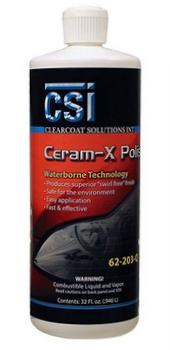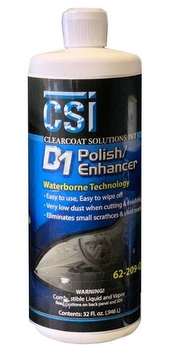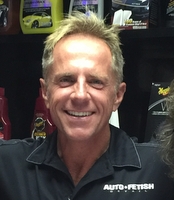Just What is the
Difference Between Compound and Polish
Many people like yourself ask what is the difference between compound and polish. The simple answer would be, "Depends on who you ask."
Not much of an answer is it?
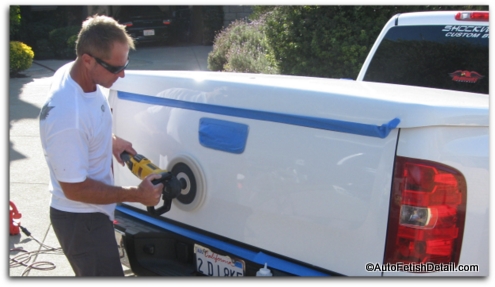
Darren's Note: I
have many guys tell me they don't need or want to know all the "details"
of a given subject. They simply trust me and want to know WWDD (What
Would Darren Do). If you are one of those people, you can click here and
it will take you to the bottom of this page and see exactly what I use, and why I
recommend the polishes I do whether you are a professional or a hobbyist)
"Darren,
every time I ask someone I get a different answer. Just what is the
difference between compound and polish? Is there really a difference or
is the industry playing word games with me just to separate me from more
of my money?"
Just what is a polish?
What is a compound?
What about polishing compound? (Is that redundancy or difference?)
So polishing compound....
Is it a polish or a compound?
Or am I just polishing with a compound?
And if there is a polishing compound, shouldn't there be a compounding polish?
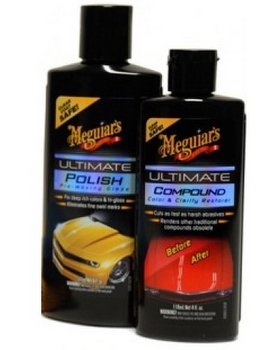
"Just what is the difference between compound and polish?"
Confused yet?!
I know I am!!
But wait, there's more!
What about rubbing compound?
Is rubbing compound different then just compound?
And if there's rubbing compound, shouldn't there be rubbing polish?
Is rubbing compound different then polishing compound?
And if there is a polishing compound, shouldn't there also be a polishing polish?
Since there is no polishing polish and there is only a polishing compound, then what am I doing when I use a polish?
And if there is only a polishing compound and no polishing polish, does that mean I can only polish with a compound? Or can I still polish with a polish?
Or how about a compounding compound? After all, we have a polishing compound and a rubbing compound, why not a compounding compound!?
Just to clarify and set the record straight; it sounds like I only have (2) things: a polish, and compound. But wait...
I also have a polishing compound and a rubbing compound. Sounds like I have (4) things now.
And let me get this part of it straight: I can do polishing, compounding, and rubbing.
I can polish with a compound because there is a polishing compound, but I can't compound with a polish because there is no compounding polish. I can also rub with a rubbing compound, but I can't rub with a polish because there is no rubbing polish; just like I can't compound with a compound because there is no compounding compound.
O.K., cool! I think I'm set! (sarcasm)
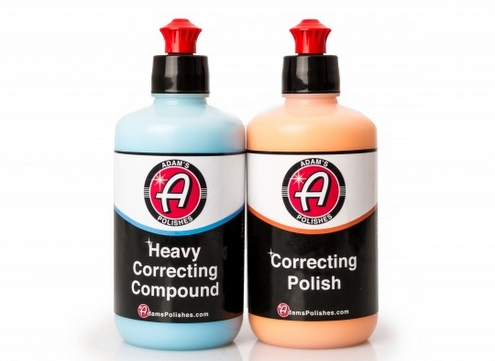
Compound versus Polish:
Noun? Verb? Product? Process?
Let's take this brain melting topic and add additional heat to the moment:
We have nouns, and we have verbs.
Nouns are tangible things. Verbs are action words.
So far we have (4) nouns: polish, compound, polishing compound, and rubbing compound.
These are all tangible things. All (4) are tangible products that you can buy, hold, smell, and even use if you want...
But then we get into the verbs; your action or doing words: Polishing, compounding, and rubbing.
But it seems the industry only allows you to match some of the nouns with some of the verbs. And doesn't allow you to match some of the nouns with some of the other verbs.
So this means you can polish with compound by using a polishing compound, but you can't polish with a polish because there is no polishing polish.
Similar to how you can only rub with a rubbing compound, but you can't rub with a polish because there is no rubbing polish.
Cool! Once again, I think I got it straight...(sarcasm again!)
Compound vs. Polishes
The "More is Better" Mentality
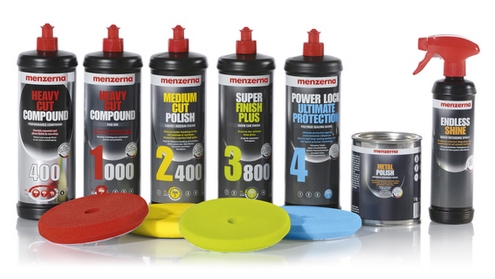
More is always better than less, right?
And we know polish and compounds are good things because they make our cars shiny! And if a little shine is good, then lots of shine is even better.
More shine not less shine.
The polish and compound industry lives and breathes by the "more is better" mentality. They love to figure out ways to sell us more, not less.
We want more shine, they want more money.
We trade money for shine.
Seems like a win/win right?
But who is doing the most winning here? You or the compound and polish manufacturer's?
Compounds and Polishes: More is Better!
Just like the many grits of sanding paper, we as car guys and detailers accept the logic that we need many "grits" of compounds and polishes.
We start with aggressive compounds and work our way down to fine polishes.
Just like sanding paper: 80 grit gets sanded down with 150 grit, which gets sanded down with 200 grit, which gets sanded down with 300 grit, which then gets sanded down with 400 grit.
Makes sense right?
It certainly makes sense if you are a car care company who wants to sell you more "stuff".
Once again; selling all of us more compound and polish, not less compound and polish.
One Polish, Two Polish, Three Polish and more!
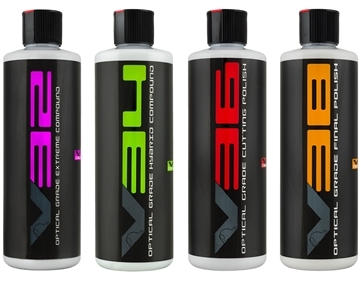
As car guys and detailers we can only use so much polish right?
But if we are taught to approach car paint as a finish carpenter approaches wood, then we as car guys and detailers know we are going to need many grades of compounds and polishes to achieve perfection.
We start with an aggressive compound to do the heaviest lifting, switch to a more mild compound, then switch to an aggressive polish, then finally switch to a super fine polish.
And if we really want to go nuts and have time and money to burn, we can buy 4 different compounds and 4 different polishes. All formulated to be rated as different grades from wildly aggressive down to super fine perfection!
After all, wouldn't we look super cool and super professional with a long line-up of compounds and polishes of which to work our magic with?
I think we have come back to the "more is better" mentality once again. And the industry is more than willing to play along.
Developing, formulating, producing, packaging, labeling what often seems like an endless array of cutting compounds, rubbing compounds, medium cut polishes, fine cut polishes, super fine polishes, and even jeweling polishes.
We look cool. We are perfectionists. We are just car lunatic shine freaks looking for perfection.
Seems like a win/win once again, right?!
Compounds and Polishes:
The Emperor and His New Clothes
Most people are familiar with the fable about the emperor and his new clothes. A vain emperor hires suit weavers to make him the "best suit of clothing". The two weavers are nothing more than con-men who convince the emperor they are using a fabric that is so unique and special that it is invisible to anyone who isn't of the same class or status as the emperor.
The implication is that you are a complete moron if you can't see this amazing fabric.
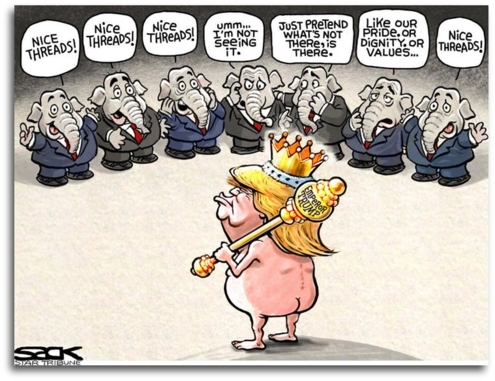 Attribution to Steve Sack Star Tribune
Attribution to Steve Sack Star TribuneEveryone surrounding the emperor plays along out of fear of not being considered worthy of their position or being looked at as "hopelessly stupid". When the suit is finally completed, the emperor marches before his subjects to show off his new clothes.
In a display of ultimate peer pressure, all the towns people play along as they stand in feigned amazement at the splendor and majesty of the emperors new clothes despite the fact that he is naked.
"Darren, what does a children's fairy tale possibly have to do with compounds and polishes?!"
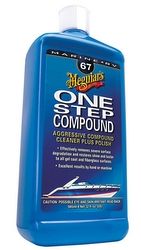
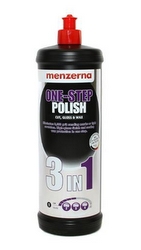
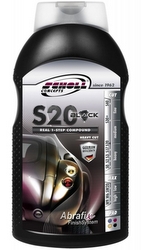
A whole lot!
I don't know if you have noticed, but the latest trend with compounds and polishes is with single-step, or one-step compounds and polishes.
Essentially making the claim that you can have the best of both worlds in a single product. A product that can do the heavy lifting of a compound, and finish like a fine polish.
"Darren, I want to know which is it; can you cut and polish with a single product, or do I still need all these different compounds and polishes? It feels like the industry is talking out of both sides of their mouths!"
- Are one-step compounds or polishes fact or fantasy?
- If this technology is possible, why now and not sooner?
- If this technology is legitimate, then why are we still being sold so many different compounds and polishes?
You Have Questions and You Want Answers
Let me break this down for you as I answer the questions based on what I have learned.
1. Are one-step compounds fact or fantasy?
Fact. The industry has developed one-step compounds/polishes. I have tested many and know they can perform. But just like any other product, they are not all created equal. But many of these products can in fact perform the heavy lifting of cutting or defect removal, while having the ability to finish down to a haze free or swirl free finish.
2. If this technology is possible, why now and not sooner?
I have also wondered what took the industry so long to develop a single-step compound/polish. But the reality is that if I was a compound and polish company, would I really want people only needing one of my products in the form of a one-step when I am currently selling them multiple products? I don't think these compound and polish companies are malicious or evil, I just think they are greedy.
3. If this technology is legitimate, then why are we still being sold so many different compounds and polishes?
If this one-step technology is possible, then why are we still being sold the endless varieties of compounds and polishes. Not only does the industry not set up a set standard of identification of compounds and polishes, but they want to continue to sell us all the many varieties of compounds and polishes.
"Darren,
not only is it hard to tell the difference between compound and polish,
but the industry now says they can sell me a single product that will
accomplish what use to require multiple products. If this is the case
why do they continue to develop more and more compounds and polishes?"
Once again: I am frustrated. You are frustrated. We're all frustrated!
At this point I want to know which part of current equation represents the "Emperor's new clothes"....
...a single product that can perform compounding but can also finish to swirl free finish, or the fact that we are continued to be sold many grades of compounds and polishes?
If it turns out to be that the one-step compounds/polishes ARE legitimate, then I fall back onto (2) questions once again:
- Why suddenly now?
- And why all the extra compounds and polishes?
Compound and polish manufacturer's are our friends. They make products that make our cars really, really shiny.
And who doesn't like shine?
And if you like shine, then you likely want more and more of it!
But at what point do we call a spade a spade. Are the compound and polish companies really our friends or have they become greedy like so many other companies.
Why Stop at One-Step Compounds/Polishes?
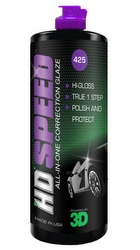
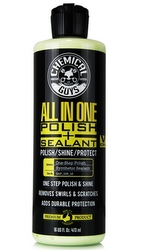
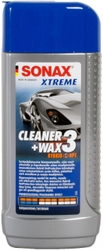
If your head isn't about to explode then let me light a match for you.
The same "logic" behind the one-step compounds is also applied to waxes and sealants.(just for the record, cleaner waxes came before the introduction of all-in-one compounds)
From cleaner waxes to all-in-one (AIO) polish waxes, we now have yet another category in what already seems like an endless stream of choices.
Let's take the cleaning power of chemicals, or the polishing power of fine abrasives and combine them with a wax or sealant. You can accomplish two tasks in a single process.
Once again, seems like a win/win to me right?
I don't know for sure if you feel like you are winning, but I certainly know the car care companies are winning. Endless choices in car waxes, paint sealants, cleaner waxes, hybrid waxes, hybrid sealants, etc., etc., etc.
Waxes and Sealants:
The Power of Layering
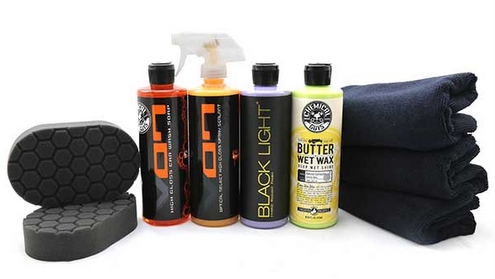
But wait, there is more!
I know... if we can sell car guys more compounds and polishes then why stop there. Let's also sell them more waxes and sealants.
Those silly car guys; they just can't help themselves. After all, they just want more shine.
Just like you can only polish a car so much, you can only wax your car so much, right?
But if we got car guys to believe that you can layer these car waxes and sealants, then we could sell them more. After all we're not just selling them more product, we're really just trying to sell them more shine. And who doesn't want more shine.
"I need to get a couple coats of good wax on my car!"
I wish I had a nickel for every customer who has said those exact words.
Does this really mean that a couple of coats of wax is better than just a single coat of wax? And if one coat of wax is good, and two coats of wax is better, then 3 coats of wax must be best!
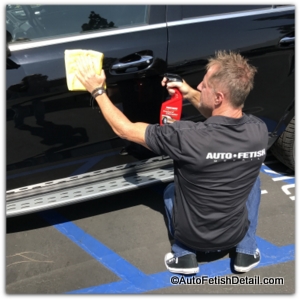
But why stop there?
Why not go with 4, 5, or even 6 coats of wax so it can be even bester-est!! ( I know...that's not really a word. But you get it)
Sounds like we are back to "more is better".
It's also beginning to feel like I am being played once again.
There are many wax products that not only imply, but literally say their wax or sealant can be "layered". So if we follow the lead of these companies, we would be "layering" our cars all day long with endless layers of the their best car wax.
What a marketing strategy!
Let's convince "Johnny Consumer" that the more he layers our wax product the better it is.
He layers more, he uses more, we sell him more.
Since Johnny Consumer thinks more is always better, we're gonna keep giving him more.
More compounds. More polishes. More waxes. More sealants!!
Silly humans we are....
We simply can't help ourselves.
But Wait!
I still haven't answered the question you came looking for an answer to:
"What is the difference between compound and polish?"
I am actually going to take it even further than that for you.
The goal will be to answer (4) important questions:
- What is the difference between compound and polish?
- How does compounding and polishing work?
- How do you know when to use a compound versus a polish?
- What does Darren use? (commonly asked as "What Would Darren Do?", or WWDD?)
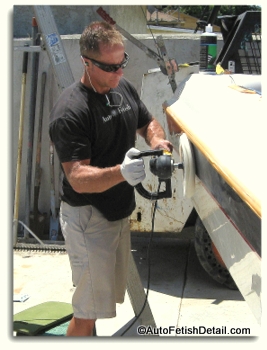
Compound: Has physical abrasives that are suspended in some form of paste, liquid, or spray. Every product will be unique in its specific formulation with regards to the type of abrasives used, along with the aggressiveness or size of the abrasives.
Based on this description, then compounding a car would be the more aggressive approach of polishing. And by "polishing", I am simply referring to the act of making something shinier.
Polish: Generally made using chemical cleaners with no physical abrasives, but can also be formulated using very fine physical abrasives only. In many cases a polish will have a combination of both chemical cleaners and fine abrasives. Every product will be unique in its specific formulation.
Based on this description a polish would be a less aggressive way to polish a car. Once again I am referring to polishing as the act of making something shinier.
Darren's Note: See how quickly a discussion on these two terms becomes both frustrating and tangled. There is no single organization that has been set up to regulate, standardize, or oversee the world of detailing, cosmetic car care, or auto body. (With that said, the IDA or International Detailing Organization is making the attempt) Since no standard rule applies across the board, we are all set-up for endless debate and confusion.
Every manufacturer is under pressure to not only remain relevant, but to gain as much market-share as they can (remember; it's all about more money). Within this unregulated industry, each manufacturer can label as they want. ( I am simply referring to how a manufacturer defines or labels their specific product. I am not referring to federal rules/regulations regarding chemicals such as the SDS-safety data sheets or familiar NFPA- National Fire Protection Association labeling)
Unfortunately there is no way to determine through the labeling of a product as to how course or fine the actual compound is or isn't. It is simply a massive spectrum of endless choices and possibilities based on how a manufacturer decides to not only formulate the product, but how they decide to label the formulation.
What one manufacturer calls a compound, can easily be called a polish by another company. There simply is no definitive rule that can be applied.
Difference Between Compound and Polish:
How Compounding and Polishing Work
In simplistic terms, the difference between compounding and polishing is essentially the same difference between compound and polish: aggressiveness.
Compounds are more aggressive than polishes.
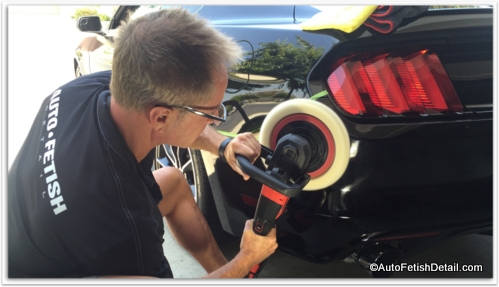 Here I am using the Milwaukee cordless rotary polisher to perform the most aggressive form of paint correction. I had to wet sand the area to remove some scratches, then I chose the rotary and a wool pad to "compound" the area. Of course since I had access to my favorite "Single Product Polishing" product (Cerma-X) I was able to get it all in a single product.
Here I am using the Milwaukee cordless rotary polisher to perform the most aggressive form of paint correction. I had to wet sand the area to remove some scratches, then I chose the rotary and a wool pad to "compound" the area. Of course since I had access to my favorite "Single Product Polishing" product (Cerma-X) I was able to get it all in a single product.Therefore compounding car paint (using a product labeled as compound) would be a more aggressive approach than polishing a car using polish (using a product labeled as a polish).
Compounding the paint is then a more aggressive way of polishing paint than using a polish to polish the paint. (is your head still spinning?)
The reason you want to "polish" a car can be reduced down to (2) objectives:
- Defect removal
- Producing shine
Defect Removal: The ultimate goal of defect removal is to create the best possible surface in which to reflect lighting. Lighting of any kind will reveal the imperfections of the car paint. Some lighting will reveal certain types of imperfections while other lighting will reveal other types of imperfections (think natural sun light versus artificial light: LED, fluorescent, incandescent, etc.) The ultimate surface in which to reflect light is a completely flat and defect free surface.(When I say flat, I am referring to surface texture, not surface gloss)
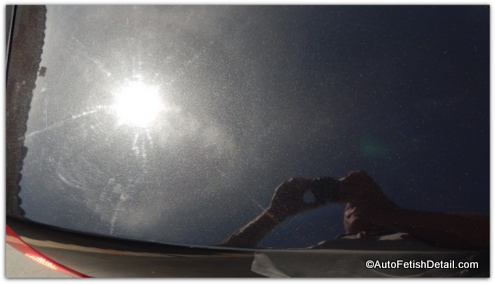 Here is a shot of the trunk lid showing what is referred to as paint spider webbing or cob-webbing. The light is reflecting off the endless scratches in the car paint. It creates a circular pattern not because the scratches are circular in nature, but because the light source (sun) is circular in shape.
Here is a shot of the trunk lid showing what is referred to as paint spider webbing or cob-webbing. The light is reflecting off the endless scratches in the car paint. It creates a circular pattern not because the scratches are circular in nature, but because the light source (sun) is circular in shape.Defects can literally be anything that will distort or diminish reflectivity of light. Defects can be anything from foreign material that sits atop the painted surface (industrial fall-out, bird droppings, tree sap, dirt, etc. To remove surface contaminants, the accepted process is by using detailing clay first before you do any "paint correction") to defects that are considered below surface. Common paint defects are, but not limited to the following: Water spot etching, swirl marks, buffer trails, holograms, bird drop etching, marring, scratches, spider-webbing/cobb-webbing, etc., etc. (below surface should not be confused with under surface. A scratch in your paint will create a "groove" into your car paint that has now created a valley that is below the surface-line of the surrounding painted areas. Underneath the paint surface would be some unwanted material or blemish that was present when the paint or clear coat was sprayed. Defect removal cannot treat paint defects that are underneath the painted surface such as bad body work. Surface texture is an entirely different animal. Surface texture like orange peel also creates distortion in the reflection)
Darren's Note: Defect removal could easily be called paint correction. The beginner may be confused by the term "paint correction". What is being "corrected" is the removal of defects or imperfections of the top surface of any painted car to produce a defect free surface. Once again, this is only accomplished through the use of abrasives in the form of sand paper, compounds, or polishes.
Not All Scratches Are Created Equal
The goal with paint correction is all about introducing appropriate and controlled scratches to create both a flat and blemish free surface.
Compounding and polishing is all about the controlled and appropriate use of sand paper, compounds, and polishes to scratch your way to perfection. Just like with grits of sanding paper, you use compounds and polishes to progressively introduce finer and finer scratches into your car paint to eventually create a flawless, blemish free surface.
 Here is the side of a black GMC Denali after I had wet sanded the door to remove orange peel and any surface defects (you will notice the rocker panel or lower half of the door remains shiny as I did not sand this area). I have created an initial uniform scratch pattern using 1200 grit sanding paper. You may notice different sanding patterns; the pattern is not the real concern, creating a uniform depth of the scratches is the real objective.
Here is the side of a black GMC Denali after I had wet sanded the door to remove orange peel and any surface defects (you will notice the rocker panel or lower half of the door remains shiny as I did not sand this area). I have created an initial uniform scratch pattern using 1200 grit sanding paper. You may notice different sanding patterns; the pattern is not the real concern, creating a uniform depth of the scratches is the real objective.When you need to perform the most aggressive form of paint correction, or to "flatten" (remove or flatten out all surface texture) then sanding paper is the answer. While most of us consider scratches on our car paint an unwanted thing, the art of paint correction is through the appropriate and controlled use of abrasives to scratch your way to perfection. This is done by creating what is considered a uniform scratch pattern. Which means that in the process of sanding, compounding, or polishing away surface defects, you are also creating a consistent or "uniform" depth of scratches. You want the entire area you are correcting to have an entirely consistent scratch, or depth of scratch pattern.
Any body shop technician will be very familiar with sanding paper in every stage of the body shop process including the the use of sand paper on the final painted, or clear coated surface. Most professional detailers have either no, to very limited use of sand paper. Wet-sanding or color-sanding (the same thing) is the most aggressive form of paint correction. This is then followed by "compounding" to remove sanding marks, which is then followed with finer and finer polishes to remove the heavy compounding marks.
It is this methodology of using compounds of varying grades to remove heavy defects, while then transitioning to finer and finer polishes to obtain perfection. (but this is old school methodology which I will begin to dissect further down the page)
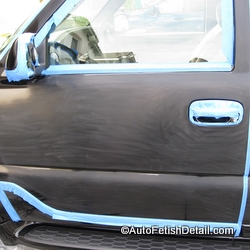
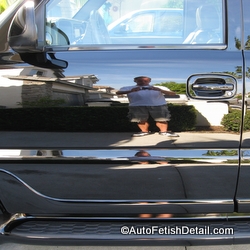
Once again, it is helpful to think of the many different grits of sanding paper. You start with an aggressive sand paper (compound) and work your way down to finer and finer sand paper (polishes). The industry would have you think that you need multiple compounds and multiple polishes in which to perform this process of paint correction.
The industry has many terms for abrasive technology:
DAT: Diminishing Abrasives Technology. Supposedly the abrasive particles within the compound or polish break down as you use the product. The concept of diminishing abrasives is for the product to naturally and progressively break down from aggressive abrasives to finer abrasives. It would be the equivalent of using a sand paper that somehow breaks down from an aggressive grit to a finer and finer grit of sand paper as you use it.
SMAT: Super Micro Abrasive Technology. Supposedly abrasives that do not break down and imply that a more controlled form of polishing can be done. Typically this "technology" will be formulated into polishes that are intended as the last step in your compounding and polishing cycle.
SAT: Smart Abrasive Technology: This industry like any other industry is as competitive as the next. So in a never ending race to a moving finish line, companies will forever come up with newer, more glorified and theatrical names for their polishes and compounds. Now we have "SMART" abrasive technology. Supposedly abrasives that are now "smart" and know more than you do! Abrasives that will respond to the moment in the smartest way possible. The industry has now just personified polish! (the confusion, hype, and marketing continue!)
AUT: Advanced Unigrit Technology: This is a term used exclusively by Meguiar's that is part of their Unigrit line of sanding papers, sanding discs, and compounds. This simply demonstrates an example of the endless "theatrics" used by virtually every industry to create "specialness" to their products. (after-all; who doesn't want to either be special, or be special by using something considered special)
Difference Between Compound and Polish:
How do you know when to use a compound versus polish?
I can sum it all up in one word: Experience.
And even if you have decades of experience like I do, you still don't know until you know. (Which is a really bad way of answering your question)
Let me explain...
Because you and I are trying to operate within an industry with no governing body, set regulations, defined terminology, I too am forever guessing when it comes to the inconsistency in which the countless compound and polish companies choose to label their products.
Once again; what one company calls a polish might be labeled as a compound by another company. The industry is all over the board.
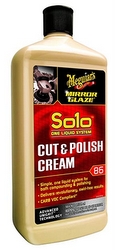
What this means as a professional is that I simply have to start by reading the labeling, and then testing it to see how it responds. There simply is no other way.
The industry wants you to think you need a massive variety of compounds and polishes to perform paint correction. But this is all based on old technology.
There is an almost limitless amount of compounds and polishes for you to test and use. The industry likes this approach as it allows them to sell you more and more products.
"Darren, how do I know when to use a compound versus a polish"
Depends. (I know; I hate that answer also. But keep reading)
Based on outdated technology, you would simply do your best to determine how aggressive you need a product to be to achieve the results you want. You start with the most aggressive compound then transition down to finer and finer polishes.
Sounds easy enough, right?
Until you have 100 different compounds and polishes to pick and chose from!
Understanding the Difference:
Paint Enhancement: Paint enhancement can come in the form of many products and is what is considered semi-permanent at best, and temporary at worst. Simply decontaminating your car paint with a clay bar and waxing your car with some of the "best auto wax" will do much to improve the appearance of your car. But this is temporary and most people accept this. Wax wears off and must be replaced periodically.
You can also clay bar your car and use a cleaner wax that has been formulated with additional chemicals that help "clean" your car paint while restoring some of the lost shine and gloss. Once again this is more under the heading of paint enhancement due to its temporary nature.
Paint Correction: Paint correction is considered permanent. Since true paint correction requires the use of abrasive compounds and/or polishes, it is permanently changing the state of your car's paint. (of course you could destroy your car's paint with improper care following your paint correction efforts, but nonetheless, you have permanently altered the state of your car's paint)
Difference Between Compound and Polish:
What Would Darren Do
(WWDD)
Wow! Are you as exhausted as I am now that we have finally reached what will be (for myself anyways) the climax of this page? And to think it all started with the much asked, "What is the difference between compound and polish".
If you are one of my long-term followers you are likely very familiar with my YouTube channel. My approach has always been to filter through the hype, misrepresentation, and misinformation as much as possible for people just like yourself.
This requires me to do a lot of testing and a lot of research. I know of very few industries that have as much hype and B.S. as this industry of surface car care, auto appearance, detailing; call it what you like.
It makes my head want to explode!
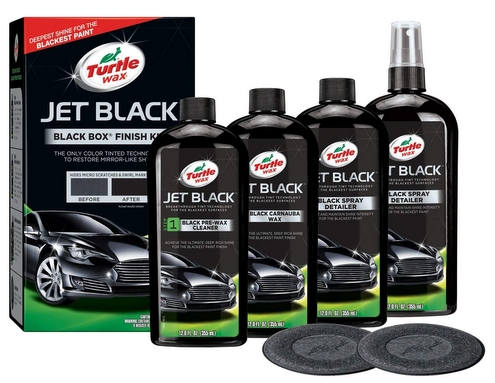
KIS: Keep It Simple
The cosmetic car care industry wants anything but simple.
Why sell a single compound or polish when a compelling case can be presented as to why guys like yourself need 100 different compounds and a thousand different polishes. (yes; hyperbole!)
Welcome to the world of NOT Keeping it Simple:
Meguiar's: Meguiar's Professional has a total of 15 different types of compounds and polishes (this doesn't include their cleaner waxes either)
Scholl Concepts: Scholl Concepts has 16 different compounds and polishes! (this includes one of their cleaner waxes, or All-in-one product)
Menzerna: Menzerna has 9 different compounds and polishes, along with an additional 2 products labeled as being "green" alternatives to compound and polish.
Chemical Guys: Chemical Guys has 7 different compounds and polishes (this doesn't include any of their cleaner waxes, or All-in-one products)
"The industry wants to do anything but keep it simple!"
Keeping it simple means less products. Less products means less ways to separate you and your money. Keeping it simple would be a win for us, but not for the compound and polish companies.
But there is a difference...
ClearCoat Solutions, Inc. (CSI)
Keeping It Simple!
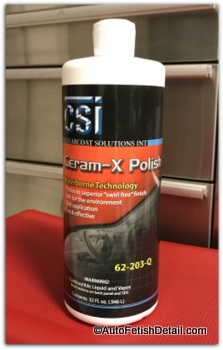
If you were to ask me what the difference between compound and polish is, I am likely to just roll my eyes. If you have made it this far you will now begin to understand my own frustrations.
Once again we are dealing with an unregulated industry with no standardization. So pretty much anything goes when it comes to labeling products.
"Throwing boulders at paint."
Using traditional compounds is like throwing "boulders at paint" to perform paint correction. While Diminishing Abrasive Technology (DAT) has been the accepted abrasive technology for a very long time, it is an "uncontrolled" way of polishing paint to restore gloss, shine, or defect removal. And simply put, it is outdated technology more interested in selling products not making your life easier!
The abrasives in Diminishing Abrasive Technology (DAT) is presented as a compound product that has abrasives that "wear out" as you use the compound/polish. The idea is for the abrasives to gradually "diminish" in their cutting abilities.
This means that you have a compound that in an uncontrolled manner, will gradually weaken or "diminish" in its ability to aggressively "cut"...
...in an uncontrolled manner !!
Supposedly this is a good thing...until you know better.
You are about to know better. But I will start with a reference from the past...
The Pirelli Tire company used to run a commercial that said:
"Power is nothing without control"
Regardless of how it's labeled or what it's called, most abrasive technology in the form of compounds and polishes is based on outdated technology, or part of an endless line-up of other compounds and polishes with the simple goal of selling you as much "stuff" as possible.
Ceram-X
A Sure Thing!
ClearCoat Solutions, Inc. (CSI) was developed specifically to answer a few, very big problems of the industry:
- Formulating a polish that can perform like a compound without damaging your paint.
- A single product that can do both the heavy lifting of "cutting" and finish down to a swirl free finish.
- Using controlled and refined abrasives for maximum control during the "cutting" and/or polishing process.
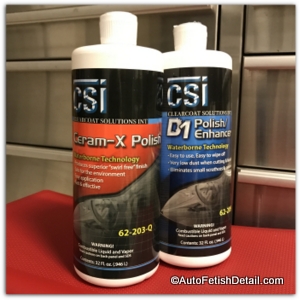
Ceram-X (pronounced "ceramics") has been my sure thing every since I was discovered it over a decade ago!
While I have used it in various of my videos on YouTube, it always frustrated me because it was not available to the general public. But this was before the Internet as we know it today.
Ceram-X was developed to perform at highest of standards. Originally designed to not only perform within both the world of auto body/collision repair, but custom restoration at the concourse level.
It simply does not not get any better or higher than that. Of course any hard-core detailer would likely argue that position since we as detailers think we have the market on the best in paint correction. But until you have won an actual Concours d'Elegence at Pebble Beach title, you can only argue so much.
So in conclusion when it comes to me performing at a truly professional level (rather than me performing in front of the camera to do a review for YouTube) I reach for what I call my "sure thing":
- Single Product Polish (ClearCoat Solutions was the first company to develop and introduce this to the market over 20 years ago)
- Can remove aggressive sanding marks from 800 grit and finish down to a swirl free and haze free finish. One product and 2 different polishing pads.
- Has
been formulated using nano-technology (technology that deals with
tolerances and dimensions less than 100 nanometers. To give you some
perspective: There are 25,400,000 nanometers in an inch!! (Seriously! It
is that small) This would be like comparing a marble to that of planet
Earth.
- Does not use DAT (diminishing abrasive technology) but ultra-refined, abrasive technology for complete control throughout the entire polishing process
- True water-borne technology (no solvent smell)
- Easy clean-up (No more white compound/polish that dries cement hard in all the crevices)
- Anti-static formulation (Anti-static properties are largely a by-product of waterborne technology)
Shine Reigns Supreme!
You can use the picture and text links just below to get yours now and start polishing with what I consider a sure thing!
"After all... Shine Reigns Supreme!"
Ceram-X Polish
- Not a compound, but a polish
- Made with highly refined abrasive technology
- The only polish required for 99.9% of all jobs on any type of paint and/or clear coat (fresh paint, fully cured paint, hard or soft clears, ceramic or non-ceramic clears)
- For use by hand, any type of machine buffer, any type of polishing pad
- Body shop safe
D1 Polish Enhancer
- A finer grade of polish
- Only needed for the extreme perfectionist
- For use on dark or black cars by a person with a highly developed eye
- Can be used independently if you are a hobbyist or car owner looking for slight paint defect removal and gloss enhancer
- For use by hand, any type of machine buffer, and type of polishing pad
- Body shop safe
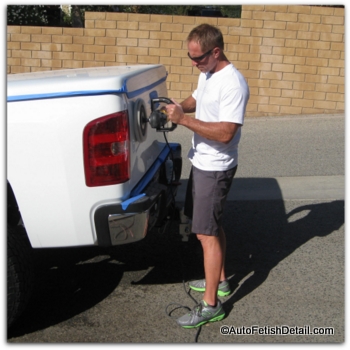
Darren's Tips:
Now you know more about the difference between compound and polish than most detailers I come across! Hopefully I have also answered many of your other questions:
- The car polishing process
- The difference between a compound and polish
- When to use a compound or polish
- Introducing you to a simplified approach than what you have likely been taught or lead to believe.
Q. Darren, you say this is a polish not a compound.
A. Yes! Compounds as they are formulated today will damage your paint due to outdated abrasive technology. Yes, the compounds available will still remove sanding marks and restore the shine, but due to the outdated abrasive technology, you are subjecting your paint to unnecessary damage during the polishing process.
Q. Darren, you say that Ceram-X is the only polish I will ever need?
A. Yes. It is a single polish that can perform on any type of paint or clear. It is also formulated with ultra-refined abrasive technology that can handle the heavy lifting without removing excessive paint/clear coat material and do so faster than the competition.
Q. Darren, you say it's a single polish system, but why is there also a different polish.
A. This product line was originally developed to handle the two highest levels of performance:
- Auto Body: They need performance and speed.
- Concours or high-end restoration: They need performance and absolute perfection.
Most people whether they are experienced or not, do not have an eye that has been developed to a level high enough to look at truly perfected paint and know if it is truly flawless or not. The world of restoration and concours requires this extreme level of performance. Most of the world simply needs good, really good, or great. The Cerma-x can deliver good, really good, and great. It is up to you and what level you are trying to achieve.
Q. Darren, what is the exact steps to getting the most out of these polishes?
A. Use the following guidelines:
Rotary Polisher
- Apply Ceram-X directly to wool pad 62-309
- Using 1000 rpm apply a small amount of pressure to surface and turn buffer on.
- Increase RPM up to 1500.
- Remove all color sanding scratches.
- Check your work before going to red foam pad 62-312.
- Notice the surface should have great color definition compared to any previous compounds. All scratches should be gone.
- Apply Ceram-X directly to red foam pad 62-312
- Using 800 rpm apply small amount of pressure and buff area, increase to no more then 1000rpm.
- Surface should be swirl free.
- If a small swirl still exists use small amount of product and rebuff with red foam pad
Dual Action/Random Orbital Polisher
- Apply Ceram-X directly to your choice of foam pad.
- Using a setting of 4-6 on most DA polishers, apply firm pressure and work until blemishes/paint defects are gone.
- Switch to your choice of finishing foam pad and apply Ceram-X directly to pad.
- Using a setting between 2-4 on most DA polishers, work the area until your eye interprets "perfection".
Difference Between Compound and Polish Summary
Having had as much success I have had with this product, I am excited for you to give it a try! As much testing as I do with countless compounds and polishes I simply fall back to this when it comes to performing at a professional level where results cannot be compromised!
I wish you much success in your own world!
Sincerely,

|
|
